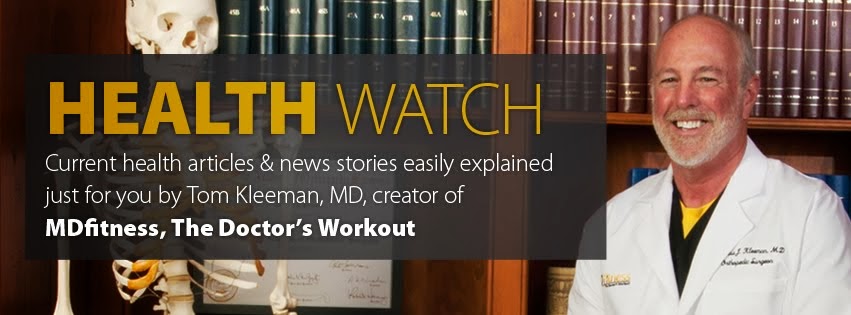There is a revolution going on in the world of Nutrition.
Foods like eggs that were considered dangerous a few years ago are now
considered healthy. Saturated fat was declared “the fast lane to a heart attack”.
That theory also seems to have been disproven. So what’s the deal with bacon?
We know we love the taste, yet of all the demonized foods this one seems to
always be at the top of the “naughty” list. So what’s the truth? Is bacon
really as bad as they say? Well let’s look at the health issues one at a time
and see where it stacks up.
Health issue #1: Bacon is full of Fat
If you remember your “Fat 101” there were good fats and bad
fats. I say “were” because the conventional wisdom has changed. Monounsaturated
fat (MUFA) was always
considered a “good” fat. MUFAs lower total cholesterol and LDL
cholesterol (the bad cholesterol) while increasing HDL cholesterol (the good stuff).
Bacon is 50% MUFA, mostly oleic acid, the healthy ingredient in olive oil. Another
“good” fat called polyunsaturated fat is found in Salmon and Safflower oil.
Omega 3 fatty acids are also included in this group. Bacon is 10%
Polyunsaturated fat. That leaves 40% Saturated fat the so-called “bad” fat, historically
felt to be associated with heart disease. Several recent randomized control
studies have concluded that there is no association between heart disease and
saturated fat. That’s important because many of the studies linking bacon to
heart disease or cancer came from observational studies which are the least reliable
since they may show an association but usually can’t establish cause and
effect. In addition observational studies are often confounded by the
co-existence of other health problems like smoking or obesity. In summary the
fat content in bacon is probably more of a benefit than a liability.
Health
issue #2: Bacon is full of Salt
Salt is used as
part of the curing process. Salt helps prevent harmful bacteria from
contaminating the meat. Excessive salt intake has been associated with high
blood pressure. The evidence suggests that for people with normal blood
pressure, salt is not a problem. On the other hand in people who have high
blood pressure, excessive salt intake could worsen their disease. Interestingly
total salt intake has decreased over the last 50 years due to the use of
refrigeration instead of salt curing. The bottom line on bacon salt is that it
not a health problem for people with normal blood pressure and when eaten in
moderation will not likely worsen the condition in those that already have the
disease.
Health
issue #3: Bacon lacks nutrition
Similar to other meat products, bacon is
actually quite nutritious. Bacon is a good source of Protein, Choline, Phosphorus, Zinc, Selenium and Thiamin. Selenium is important in preventing cancer
and fighting infection. Choline is beneficial for the heart as well as the
brain. The omega 3 fatty acids in bacon act as potent anti-inflammatories
protecting against cancer and aging in general. Phosphorous
is involved in bone and tooth metabolism as well as, kidney function, cell
growth and heart muscle contraction. Oleic acid has been shown to help regulate
blood sugar levels, insulin sensitivity, and overall circulation. The type and
amount of nutrients depends on how the pigs were raised. Farm raised pork for
instance has a higher level of nutrients especially Vitamin D. In summary, from
a nutritional standpoint bacon stacks up pretty well especially farm-raised
bacon.
Health Issue #4: Bacon causes Cancer because of Nitrates
Sodium
nitrate and nitrite are two ingredients found in most processed meats including
bacon. Sodium nitrate is added as a preservative to help preserve the color and
prevent spoilage. Nitrate is converted to Nitrite which inhibits bacterial
growth especially Botulism. Actually sodium nitrate is a naturally occurring
mineral that is found in most vegetables especially leafy greens like spinach. The
problem isn’t the nitrite it’s the interaction of nitrites with proteins in the
stomach resulting in nitrosamines. Nitrosamines have been found at least in
animals to be carcinogenic when consumed in large amounts. Luckily the
formation of nitrosamines can be largely inhibited by addition of antioxidants
like Vitamin C and E. The USDA now requires that these vitamins be added to
bacon for this purpose. Cooking temperature also affects the production of
nitrosamines. Cooking the bacon at higher temperatures results in more production
of nitrosamines. On the health side, some of the nitrites are converted to
nitric oxide which is a potent arterial dilator. It also helps in nerve
transmission and boosts the immune system. In reality the cancer risk in bacon
is probably minimal especially if the bacon is microwaved rather than fried.
So
there you have it. Bacon probably doesn’t qualify as a “super food” but it is
definitely not “death on a plate”. The scientific evidence suggests that bacon
can be part of a healthy diet. It just shouldn’t be the whole diet. A couple of
strips microwaved for breakfast or crumbled on a salad will supply your bacon
fix without the guilt. Bon appetite!







